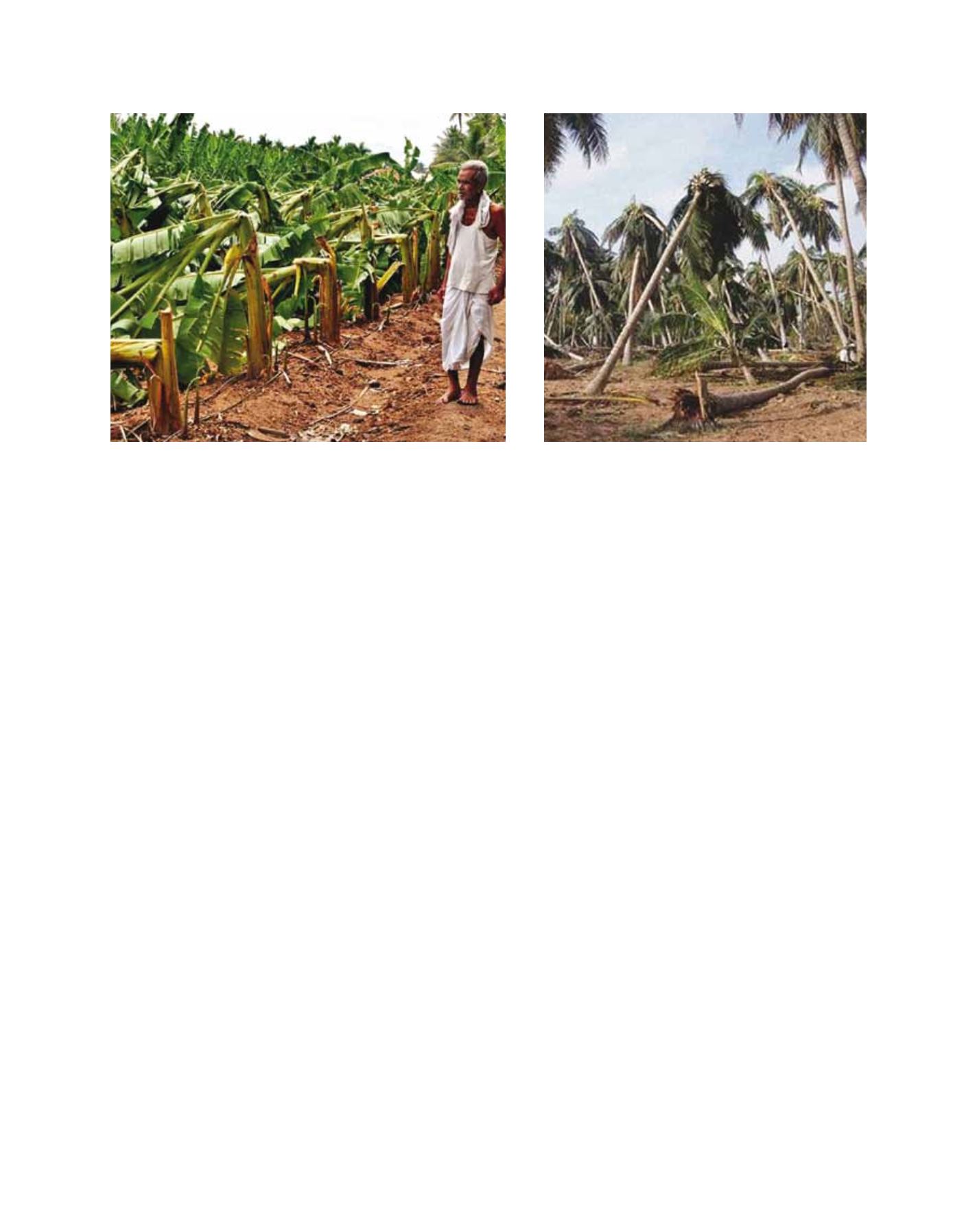

[
] 36
A
griculture
and fertilizer information. These enterprises send the
bulletins on to farmers as SMS messages of up to 160
characters in the local language. Although content
is also sent in English, the real advantage is that the
language of the local people is used to communicate
with them.
An Indian language-compatible handset enables
messages in local languages to be received and assures
farmers that SMS text messages originate from IMD by
identifying this organization as the sender. In parallel,
private companies call farmers to receive feedback on
the advice given and any queries they may have. The
companies are also teaching farmers across the country
how to subscribe and use the SMS service for advice on
farm management.
Sixteen states (Delhi, Uttar Pradesh, Punjab,
Haryana, Rajasthan, Madhya Pradesh, Orissa, West
Bengal, Gujarat, Karnataka, Kerala, Tamilnadu, Andhra
Pradesh, Bihar, Maharashtra and Himachal Pradesh)
have been covered by this service, with around 3 million
farmers receiving SMS messages.
Private companies and their partners participate in
direct farmer contact meetings to raise awareness of
the SMS system, facilitate its use and explain how this
service benefits them. Additional education includes
farmers’ awareness programmes and fairs.
Lessons learned about users and their needs
To date, the PPP is working well. Private companies
have been asked to verify the district-level bulletin and
advice for improvement in the AAS system. They have
also been asked to collect feedback from farmers so
that IMD, in collaboration with AMFUs, will be able
to provide a better service. A two-way communication
channel has been developed for the free flow of infor-
mation between scientists and farmers.
The following crop losses were recorded in the southern states of
India in 2011 due to adverse weather conditions:
• Banana plantations and coconut trees were damaged by heavy
rain and lightning in the Tiruppur district of Tamilnadu in April
• Crops such as turmeric, tomato and ladyfinger were damaged
by heavy rain in the Cauvery Delta Zone in September, while
banana trees were uprooted by high winds in the Coimbatore
district of Tamilnadu during October
• Rubber and banana trees were uprooted by high winds and
damaged by heavy rain, which also affected other vegetable
crops in the Thiruvanathpuram district in Kerala, with similar
crops affected in other parts of Kerala, including areca nut, cocoa
and coconut
• Banana and ginger crops were damaged by heavy rain in the
Wayanad district of Kerala in November.
Agromet advice is disseminated in a range of different ways.
Conventional
Communicating advice to agricultural users should be a quick
process. Conventional methods, including bulletins, pamphlets,
posters, postal letters, newspapers, radio, TV, mobile phones, local
announcements, village meetings, local time-bound markets and
personal communication, are most commonly used, with advice
delivered to farmers through a multichannel system.
Mobile technology
Under the IAAS scheme, efforts are being made to extend the reach of
advice in relation to the needs of farmers. In addition to the multichan-
nel system, the Integrated Agromet Advisory Service (IAAS) project is
disseminating advice to the Indian farming community through SMS
messaging and Interactive Voice Response Technology (IVR).
In a public-private partnership (PPP) arrangement, AMFUs are
preparing and sending district AAS bulletins twice weekly to private
companies, including Reuter Market Light, Nokia and Handygo,
comprising weather forecasts along with crop, pest, disease, seed
Image: Tamil Nadu Rice Research Institute, Aduthurai, Tamil Nadu India
Image: Tamil Nadu Rice Research Institute, Aduthurai, Tamil Nadu India
Coconut palms are vulnerable to the effects of heavy rain
and lightning
Banana trees damaged by heavy rain and uprooted by high winds in
Tamilnadu and Kerala
















